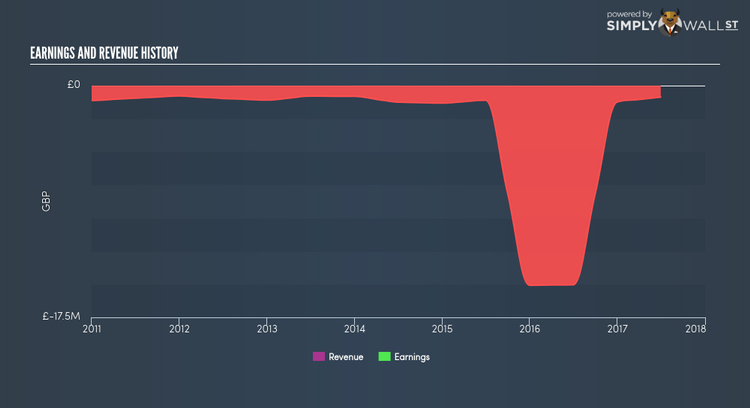Should You Be Holding Lansdowne Oil & Gas plc (LON:LOGP) Right Now?

For Lansdowne Oil & Gas plc’s (AIM:LOGP) shareholders, and also potential investors in the stock, understanding how the stock’s risk and return characteristics can impact your portfolio is important. Every stock in the market is exposed to market risk, which arises from macroeconomic factors such as economic growth and geo-political tussles just to name a few. This is measured by its beta. Different characteristics of a stock expose it to various levels of market risk, and the market as a whole represents a beta value of one. A stock with a beta greater than one is expected to exhibit higher volatility resulting from market-wide shocks compared to one with a beta below one.
View our latest analysis for Lansdowne Oil & Gas
An interpretation of LOGP’s beta
With a beta of 2.28, Lansdowne Oil & Gas is a stock that tends to experience more gains than the market during a growth phase and also a bigger reduction in value compared to the market during a broad downturn. Based on this beta value, LOGP can help magnify your portfolio return, especially if it is predominantly made up of low-beta stocks. If the market is going up, a higher exposure to the upside from a high-beta stock can push up your portfolio return.
Does LOGP’s size and industry impact the expected beta?
LOGP, with its market capitalisation of GBP £4.34M, is a small-cap stock, which generally have higher beta than similar companies of larger size. Furthermore, the company operates in the oil and gas industry, which has been found to have high sensitivity to market-wide shocks. As a result, we should expect higher beta for small-cap stocks in a cyclical industry compared to larger stocks in a defensive industry. This supports our interpretation of LOGP’s beta value discussed above.
How LOGP’s assets could affect its beta
During times of economic downturn, low demand may cause companies to readjust production of their goods and services. It is more difficult for companies to lower their cost, if the majority of these costs are generated by fixed assets. Therefore, this is a type of risk which is associated with higher beta. I examine LOGP’s ratio of fixed assets to total assets to see whether the company is highly exposed to the risk of this type of constraint. Given that fixed assets make up an insignificant portion of total assets, LOGP doesn’t rely heavily upon these expensive, inflexible assets to run its business during downturns. As a result, the company may be less volatile relative to broad market movements, compared to a company of similar size but higher proportion of fixed assets. This outcome contradicts LOGP’s current beta value which indicates an above-average volatility.
What this means for you:
Are you a shareholder? You could benefit from higher returns during times of economic growth. However, in times of a downturn, it may be safe to look at a more defensive stock which can cushion the impact of lower demand. It’s always wise to take into account your portfolio sensitivity to the market before you invest in LOGP, as well as where we are in the current economic cycle. For next steps, take a look at LOGP’s outlook to see what analysts are expecting for the stock on our free analysis plaform here.
Are you a potential investor? Before you buy LOGP, you should take into account how their portfolio currently moves with the market, in addition to the current economic environment. LOGP may be a valuable addition to portfolios during times of economic growth, and it may be work looking further into fundamental factors such as current valuation and financial health. Continue your research on the stock with our free fundamental research report for LOGP here.
To help readers see pass the short term volatility of the financial market, we aim to bring you a long-term focused research analysis purely driven by fundamental data. Note that our analysis does not factor in the latest price sensitive company announcements.
The author is an independent contributor and at the time of publication had no position in the stocks mentioned.

